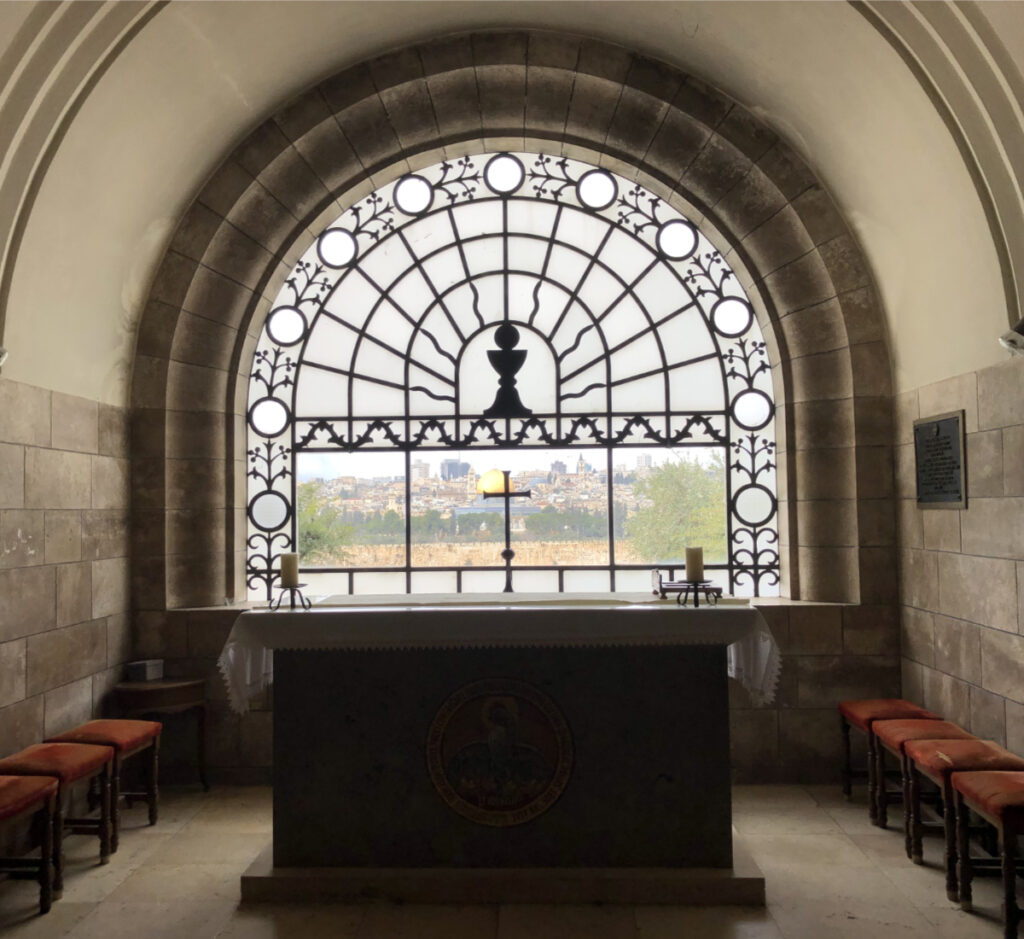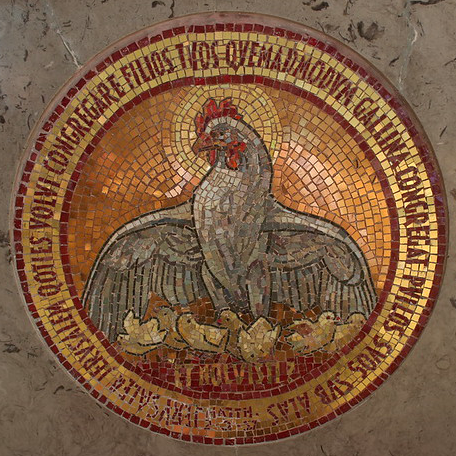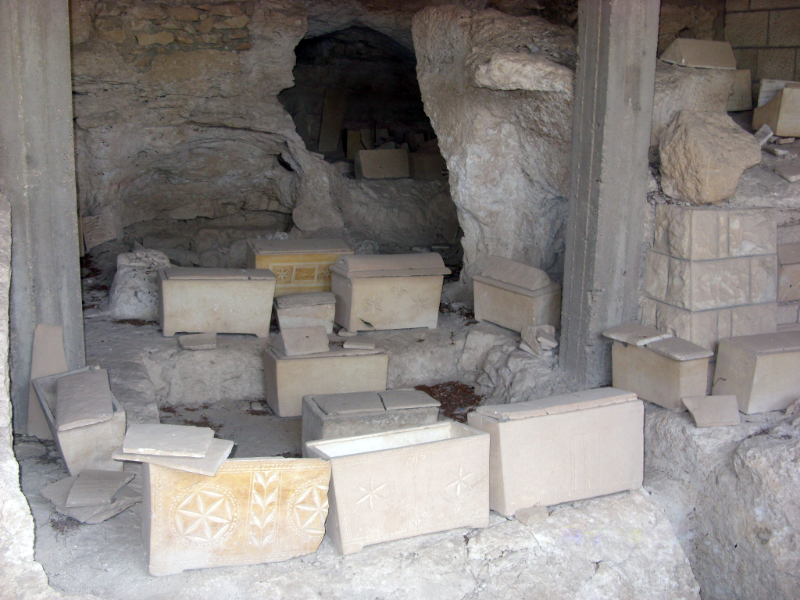In this brief blog series, we are surveying some of the key sites that we visit on the Mount of Olives. In my last post, I gave some general information about the Mount of Olives and the “Palm Sunday Walk” that we often take with our groups when we are in Jerusalem. This is a beautiful walk with a spectacular view of the city from the east. One of the most architecturally interesting stops along the way is the Roman Catholic chapel called Dominus Flevit, which is Latin for “the Lord wept.”

Sitting about halfway down the slope, the location recalls Jesus’ approach to Jerusalem on the first Palm Sunday. Luke 19:41 tells us, “As he approached Jerusalem and saw the city, he wept over it.” The small chapel designed by the Italian architect Antonio Barluzzi was completed in 1955. However, it was built over the ruins of a fifth-century Christian monastery chapel. The building incorporates some of those ruins, including its mosaic floors. The modern chapel is shaped like a teardrop, and it has four “tear vases” at the four corners of the roof. These vases are shaped like the small vessels used in the first century to capture one’s tears of grief when a loved one passed away.

A window behind the altar looks out over the Temple Mount and the city of Jerusalem. This is a well known vista and a favorite photo for pilgrims to capture. Also, at the foot of the altar is a mosaic of a hen gathering her chicks under her wings, in reference to Luke 13:34.

The church grounds contain a first-century tomb and some limestone boxes, called “ossuaries.” Typically, when a family member was laid in a tomb, the tomb was closed up for a year. At the end of that time, the tomb was reopened and the bones were gathered into an ossuary, which remained in the tomb. This allowed the tomb to be reused many times, creating a common resting place for generations of a family.
The Dominus Flevit chapel and grounds are a meaningful place to pause and to reflect on Jesus’ sorrow over those who would reject him and the life he offers. He rode toward the city that day on a colt to the accolades of those who were ready to crown him their political king. But he wept over the city he loved because they “did not recognize the time of God’s coming” to them (Luke 19:44).
Header Image: Lorien22, CC BY-SA 3.0
Mosaic photo by Roman Catholic Archdiocese of Boston, CC BY-ND 2.0, cropped



[…] arrest, dominate the front of the church. The Italian architect Antonio Barluzzi (who also built Dominus Flevit, among others) designed the church to evoke the darkness of the nighttime setting and of the grief […]